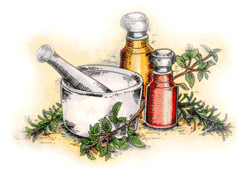 Abdominal Injury Abdominal Injury |
 Achilles Tendon Achilles Tendon |
 Ankle Bone Injury Ankle Bone Injury |
 Ankle Strain Ankle Strain |
 Ankle Synovitis Ankle Synovitis |
 Arm And Shoulder Tenosynovitis Arm And Shoulder Tenosynovitis |
 Arm Contusion, Forearm Arm Contusion, Forearm |
 Arm Contusion, Radial Nerve Arm Contusion, Radial Nerve |
 Arm Contusion, Upper Arm Injury Arm Contusion, Upper Arm Injury |
 Arm Exostosis Arm Exostosis |
 Arm Fracture, Forearm Arm Fracture, Forearm |
 Arm Fracture, Humerus Arm Fracture, Humerus |
 Arm Strain, Biceps Injury Arm Strain, Biceps Injury |
 Arm Strain, Forearm Arm Strain, Forearm |
 Arm Strain, Triceps Arm Strain, Triceps |
 Arm Strain, Upper Arm Arm Strain, Upper Arm |
 Back, Ruptured Disk Injury Back, Ruptured Disk Injury |
 Back Sprain, Lumbo Dorsal Region Injury Back Sprain, Lumbo Dorsal Region Injury |
 Back Sprain, Sacroiliac Region Injury Back Sprain, Sacroiliac Region Injury |
 Back Strain, Dorsal or Thoracic Spine Region Back Strain, Dorsal or Thoracic Spine Region |
 Back Strain, Lumbar Spine Region Back Strain, Lumbar Spine Region |
 Bee Sting Bee Sting |
 Bladder or Urethra Injury Bladder or Urethra Injury |
 Breast Contusion Breast Contusion |
 Breastbone Sprain Breastbone Sprain |
 Burns Burns |
 Buttock Contusion Buttock Contusion |
 Chest Muscle Strain Chest Muscle Strain |
 Collarbone Area Strain, Deltoid Muscle Collarbone Area Strain, Deltoid Muscle |
 Collarbone (Clavicle) Contusion Collarbone (Clavicle) Contusion |
 Collarbone Dislocation - Shoulder Joint Collarbone Dislocation - Shoulder Joint |
 Collarbone Fracture, Outer End Collarbone Fracture, Outer End |
 Collarbone Fracture, Shaft Midportion Collarbone Fracture, Shaft Midportion |
 Corneal Abrasion Corneal Abrasion |
 Dog Bites Dog Bites |
 Ear Injury Ear Injury |
 Elbow Bursitis, Radio-Humeral Elbow Bursitis, Radio-Humeral |
 Elbow Contusion, Ulnar Nerve Elbow Contusion, Ulnar Nerve |
 Elbow Contusion Elbow Contusion |
 Elbow Dislocation Elbow Dislocation |
 Elbow Fracture, Coronoid Process Elbow Fracture, Coronoid Process |
 Elbow Fracture, Epicondyle Elbow Fracture, Epicondyle |
 Elbow Fracture, Lower Humerus Elbow Fracture, Lower Humerus |
 Elbow Fracture, Radius Elbow Fracture, Radius |
 Elbow Fracture, Ulna Elbow Fracture, Ulna |
 Elbow Sprain Elbow Sprain |
 Elbow Strain Elbow Strain |
 Elbow Tendinitis or Epicondylitis Elbow Tendinitis or Epicondylitis |
 Eye Injury Eye Injury |
 Face Contusion Face Contusion |
 Snakebite Snakebite |
 Spider Bites Spider Bites |
 Tick Bites Tick Bites |
|
|
Home :: Chest Muscle Strain
Chest Muscle Strain
Injury to the muscles and tendons that attach to the sternum (breastbone). Muscles, tendons and bone comprise units. The units stabilize the breastbone and ribs and allow their motion. A strain occurs at the weakest part of a unit. Strains are of 3 types:
- Mild (Grade I) - Slightly pulled muscle without tearing of muscle or tendon fibers. There is no loss of strength.
- Moderate (Grade 11) - Tearing of fibers in a muscle, tendon or at the attachment to a rib. Strength is diminished.
- Severe (Grade III) - Rupture of the muscle-tendon-rib attachment with separation of fibers. Severe strain requires surgical repair. Chronic strains are caused by overuse. Acute strains are caused by direct injury or overstress.
BODY PARTS INVOLVED
- Muscle and tendons,that attach the ribs to the sternum.
- Sternum.
- Soft tissue surrounding the strain, including nerves, periosteum (covering to bone), blood vessels and lymph vessels.
Causes
-
Prolonged overuse of muscle-tendon units attached to the sternum and ribs.
- Single violent injury or force applied to the muscle-tendon units around the sternum and ribs.
Signs & Symptoms
- Pain when moving or stretching, especially "pushing" movements of the arms.
- Muscle spasm.
- Swelling around the injury
.
- Loss of strength(moderate or severe strain).
- Crepitation ("cracking") feeling and sound
when the Injured area is pressed with fingers
- Calcification of muscles or tendons (visible with X-rays).
Treatment
Follow your doctor's instructions. These instructions are supplemental.
- Use ice massage 3 or 4 times a day for 15 minutes at a time. Fill a large Styrofoam cup with water and freeze. Tear a small amount of foam from the top so ice protrudes. Massage firmly over the Injured area In a circle about the size of a softball.
- After the first 24 hours, apply heat instead of ice, if it feels better. Use heat lamps, hot soaks, hot showers, heating pads, or heat liniments and ointments.
- Take whirlpool treatments, if available.
- Wrap the chest with an elasticized bandage between treatments.
- Massage gently and often to provide comfort and decrease swelling.
Home Diet
Eat a well-balanced diet that includes extra protein, such as meat, fish, poultry, cheese, milk and eggs. Increase fiber and fluid intake to prevent constipation that may result from decreased activity.
Prevention
- Participate in a strengthening and conditioning program appropriate for your sport.
- Warm up before practice or competition.
- Wear proper protective chest padding.
back to injuries section
|
|


